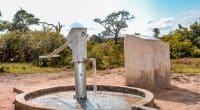A partnership agreement has recently been signed between the Government of Nairobi County, 2030 Water Resources Group (2030 WRG), led by the World Bank, and the Danish Environmental Protection Agency (EPA). These two actors will support Nairobi County in the management of its industrial wastewater.
In conjunction with the conference on water and sanitation held in Nairobi from October 28 to 31, 2019, an agreement was signed between the Government of Nairobi County and two partners. These are 2030 Water Resources Group (2030 WRG), a group of public, private and civil society partners led by the World Bank, and the Danish Environmental Protection Agency (EPA).
The objective of this tripartite partnership is to support the Government of Nairobi County in the management of its industrial wastewater. Currently, industries in this county in central Kenya discharge about 400,000 m³ of wastewater per day. Only 192,000 m³ of it is treated by two wastewater treatment plants. The rest flows into the streams that join the Nairobi River that crosses the Kenyan capital.
The purpose of the partnership
2030 WRG was established by the World Bank to help countries close the gap between water demand and supply by 2030. This institution, in association with the EPA, will have to set up “modern industrial effluent management systems”. These include decentralised systems. For such mechanisms to work, the private sector must be involved. This solution will be facilitated by the involvement of the Kenya Industrial Water Alliance (KIWA).
The alliance, established in 2016, brings together 23 partners from the private sector, the public sector and civil society to collectively address the risks associated with the discharge of wastewater into the environment. There are large companies such as Coca-Cola, Nestlé, Bidco Africa and Grundfos.
“We look forward to this future cooperation, which will be of great value in the fight against water pollution and the challenges of industrial waste,”says Annette Samuelsen, head of EPA’s division. The association of an actor such as the World Bank (through 2030 WRG) is strategic since it could facilitate the release of funds for industrial wastewater treatment projects.
According to 2030 WRG, industry is a key sector in Kenya’s economy, accounting for 21% of its gross domestic product (GDP). The government’s Strategic Development Plan (Vision 2030) aims to further industrialise the country by creating a robust, diversified and competitive manufacturing sector, which is expected to contribute up to 10% of GDP. Water resources will be more in demand as a result of the development of the industrial sector, especially manufacturing. Hence the importance today of reusing treated wastewater.
Jean Marie Takouleu







